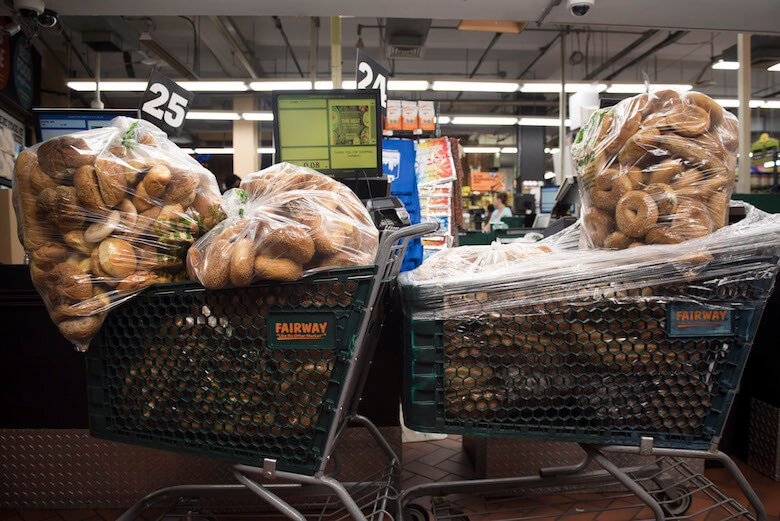
Walmart entering your home to stock your fridge with groceries, Amazon dropping Whole Foods hauls at your doorstep via drone, plant-based meat that “bleeds”—if this is increasingly how we’re eating in 2017, what can we expect in 2020? 2050? And given a growing world population and climate change concerns, which of these innovations do we actually need?
These are the big questions we’re exploring on November 3-4 at Food Loves Tech (FLT): our all you can eat and drink Industry City expo where you can test drive food technologies from field and sea to next gen frontiers. We’ll also have expert panels answering some of the most important questions facing our food supply including one entitled “How Can Tech Help Mitigate Food Waste?”
ReFED is a multi-stakeholder non-profit that takes a data-driven approach to reducing U.S. food waste. The organization was started to better understand the landscape of food waste, and released the Roadmap to Reduce U.S. Food Waste in 2016. The Roadmap analyzes 27 cost-effective and scalable solutions, and describes four levers of activity that need to take place in order to mitigate food waste: education, policy, financing and innovation.
We talked to ReFED’s program manager Katy Franklin about leveraging tools and technologies to reduce food waste through policy and innovation.
Edible Brooklyn: Can you tell me about the approach that ReFED takes to address food waste?
Katy Franklin: Our expertise is really about bringing people together. In producing the Roadmap, we built a huge network of food waste experts from industry, academia, foundations, government and investor communities. Now we’ve been taking a really tactical look at how we can push forward on some of the solutions that bring everyone together.
EB: Earlier this year, ReFED released two online tools: the Food Waste Policy Finder and the Innovator Database. How do you see those tools helping to move food waste solutions forward?
KF: We saw a need for an aggregated tool for each of those areas. With the Policy Finder, it’s very hard to find food waste policies. There is a lack of clarity around what laws are in place where. A lot of what we did was trying to clear the smoke and let people see where there are good policies and where there are prohibitive policies. We wanted to create a simple resource for a municipality or a state to get some guidance on lessons learned from someone else.
For the innovator database, we saw a gap in information about what kinds of innovation was out there, and how to get in contact with those businesses. We see it as a way for foundations or funders to find projects or research they would be interested in funding. And also for businesses organizations themselves to build networks—to find someone who can take the output of their process, or someone to partner with, and to give them a better sense of the landscape.
EB: In thinking about all of the policy and innovation case studies you’ve gathered, how have you seen technology successfully employed to mitigate food waste?
KF: From a policy perspective, there are ways to leverage sharing and social media connectivity. New York City does a great job of communications, and I think there are opportunities to use that kind of technology for policy or better implementation.
On the innovation side, I think there are so many different ways to do it right. With some of the earlier successful food waste companies, a lot of what they did was just figuring out good logistics. With a food waste prevention company like Imperfect Produce, so much of it is coordinating sourcing from farms, building a network, figuring out optimization of freshness. In the recovery space, there are a ton of different apps now for getting people to pick up and transport food. Something we have noticed is that you have to have a lot of local knowledge to build those tools correctly. You really have to understand what your infrastructure is and what your capacity limits are to build a good program and have it run on the ground.
So many of the solutions that we have seen coming out are going back to a traditional way of doing something, even though they are incorporating technology. We are seeing partnerships that use byproducts from manufacturing processes—like grain from the brewing process or the skin of the coffee cherry—and turning those into new food products. Being more thoughtful about how we are using every part of a food product is not a new idea, but we are able to leverage technologies to do that more effectively now.
EB: ReFED focuses on using data to solve our national food waste problem. Can you talk about the role that technology plays in a data-driven approach?
KF: We are excited to see different organizations collaborating around a tool or an app, and enabling a huge amount of data to be collected. From prevention all the way to recycling, with more technology we are capturing more data. That is going to enable the system at large to better understand the scale of the issue, the progress made, and to identify critical gaps where there isn’t data or we are not being effective.



